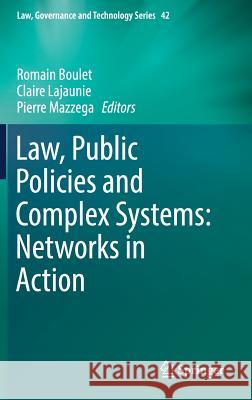Law, Public Policies and Complex Systems: Networks in Action » książka
topmenu
Law, Public Policies and Complex Systems: Networks in Action
ISBN-13: 9783030115050 / Angielski / Twarda / 2019 / 280 str.
Kategorie:
Kategorie BISAC:
Wydawca:
Springer
Seria wydawnicza:
Język:
Angielski
ISBN-13:
9783030115050
Rok wydania:
2019
Wydanie:
2019
Ilość stron:
280
Waga:
0.59 kg
Wymiary:
23.39 x 15.6 x 1.75
Oprawa:
Twarda
Wolumenów:
01
Dodatkowe informacje:
Wydanie ilustrowane











